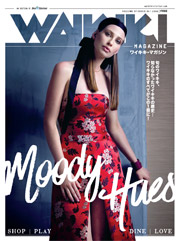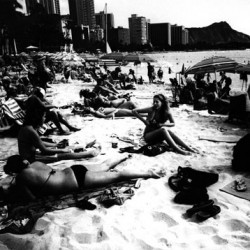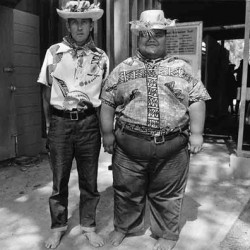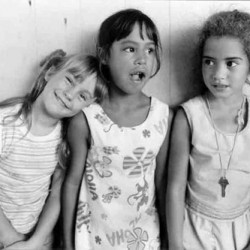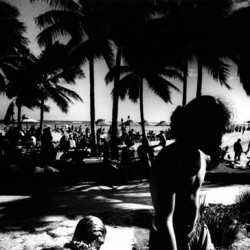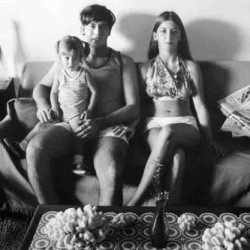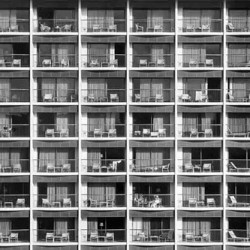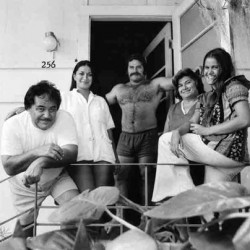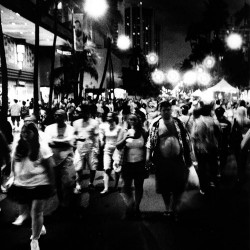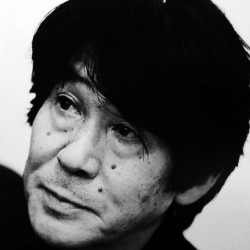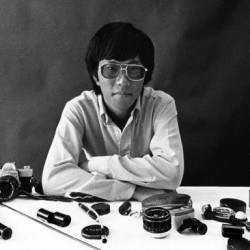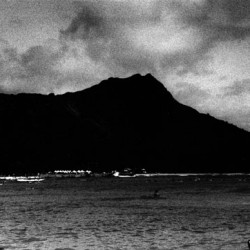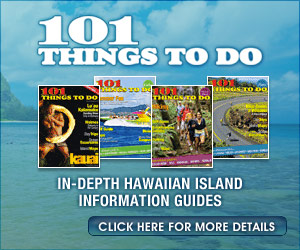Captured Audience
Selections from Framing Paradise: Photography and Waikiki
The place called Waikiki by ancient Hawaiians is known throughout the contemporary world as a vacation escape promising beaches and bars, shopping and sunsets. In the Hawaiian language, Waikiki is the “place of the spouting waters,” and it once flourished as an area on the island of O‘ahu known for its pristinely accessible aquaculture and surf. Early Hawaiians settled here and built communities sustained by the natural resources available to them. But they would find their Waikiki changing quickly once the beauty and abundance of the area was discovered by outsiders. Waikiki was once esteemed for the mana it possessed. But years went by, and Waikiki became less the land of the native people of Hawai‘i and more the place for visitors. Today, the waterways and wetlands of Waikiki have been replaced by hotels and stores. The beach remains, as does Diamond Head in the backdrop. But tourism would eventually move to the forefront, and Waikiki would be forever changed.
- Umbrellas and bikinis and Diamond Head in the distance are flanked by a long line of Waikiki’s hotels. “When coming to Hawai‘i,” Daido Moriyama recounts, “the stimulation you get from the land is very different. The sights and smells very much influenced how I photographed Hawai‘i.” Photo: Daido Moriyama
- Two young men from Moloka‘i—barefooted and dressed in the style of the Paniolo—were performers for the Hula Festival at Kapi‘olani Park in 1973. Eric Yanagi remembers that they were cousins, despite the lack of resemblance. They display what Yanagi suggests is a sort of “Laurel and Hardy” appearance that contrasted with what he recalls was marked seriousness about their craft. PHOTO: COPYRIGHT 1973 E.Y.YANAGI
- Three smiling faces still radiate with life even 40 years after they were photographed. Yanagi suggests that these little girls show the racial diversity of the islands. The child on the right has a key hanging from a string around her neck—”literally a latchkey kid,” Yanagi quips. PHOTO: COPYRIGHT 1973 E.Y.YANAGI
- A local boy walks in the foreground of this photograph, while the background is flooded with beachgoers from around the world. Moriyama states that the biggest difference in shooting in Japan versus Hawai‘i is that, here he is “a foreigner shooting in a foreign land.” There is no place in the world like Waikiki. Photo: Daido Moriyama
- The strategy Yanagi used for getting interior shots was simply knocking on doors of strangers and asking “Can I take your picture?” This family was willing to let him enter their one-bedroom home and spend a few moments with them. PHOTO: COPYRIGHT 1973 E.Y.YANAGI
- Waikiki is one of the most concentrated gathering places for an interesting range of photographic possibilities. This notable photograph isolates and celebrates the Waikiki hotel—complete with par-tiers in the lower left corner. PHOTO: COPYRIGHT 1973 E.Y.YANAGI
- Yanagi also sought to create intimate yet informal portraits that represented Waikiki as he knew it and as a place that would never be the same from that decade on. This family portrait is one such photograph. Yanagi found out later that the father was actually the local musician Jesse Kalima. Their home was razed and replaced by a hotel. PHOTO: COPYRIGHT 1973 E.Y.YANAGI
- Waikiki is blurred and streetlights frame the bustling street. Regarding the intermixing of light and darkness, Moriyama states, “I perceive that light and darkness are in a tension, and I am interested in a world where that tension is present.” Photo: Daido Moriyama
- Daido Moriyama
- Eric Yanagi (1972)
- Photo: Daido Moriyama
ERIC YANAGI: In 1959, the Hawaiian Islands would become the 50th of the United States. Moving forward, the 1970s was a time of change throughout the U.S., and Hawai‘i was no exception. Development in Honolulu, specifically Waikiki, was at an all-time high, and residents of Waikiki were quickly being displaced by the expanding hotels. Local artist Eric Yanagi recognized the importance of recording the changing times through his photographs of people and places in Waikiki. He was deliberately aware that his photographs would have historical significance. In 1973, at the age of 21, Yanagi walked through Waikiki and directly connected with subjects for the photographs in his collection.
DAIDO MORIYAMA: A little over thirty years later, world-renowned photographer Daido Moriyama, largely appreciated for the way his photographs make such bold social and political statements, would visit the Hawaiian Islands and record what he saw as significant and defining for Honolulu. He used his seemingly informal approach of “snap photography” to capture the essence of the people and places of Waikiki. The distance he kept from his subjects allows the viewer to peer into a world they otherwise might never see.
Daido Moriyama speaks of wanting to capture the essence of a place. When asked what he felt the essence of Waikiki was, he stated with conviction, “The quintessential Waikiki image is Diamond Head.” Native Hawaiians called this crater Le‘ahi; and they built a heiau there for spiritual practice. Perhaps it is the mana of this Waikiki motif that Moriyama speaks of when recognizing its visual draw for people from all around the world. Many of his photographs, indeed, feature Diamond Head, sometimes the focus… sometimes obscured.
O ka makapo wale no ka mea hapapa i ka puli. (Only the blind grope in darkness.)
This ‘olelo no‘eau, or Hawaiian proverb, is said to “one who gropes around instead of going directly to the object he is seeking.” The directness of both Daido Moriyama and Eric Yanagi is clear in the visionary artistry of their work and in how each man sought out subjects for his Waikiki photographs. Although both artists are distinct in approach to their respective subject matter, both utilize the contrast of darkness and light as they define each subject within a photograph and capture each subject’s shadowy essence.



